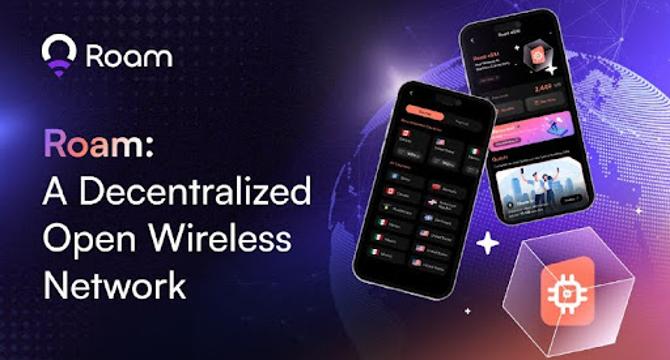TechBullion
11h
279

Image Credit: TechBullion
Synergis Capital: How Roam is Pioneering Decentralized Telecom and Transforming the Traditional Telecom Industry
- The traditional telecom industry faces unprecedented challenges due to upfront investment pressure for 5G while revenue model transformation has not materialized. Roam has emerged rapidly with a free-to-use model, challenging the traditional telecom landscape with its integration of Web3 technology and telecommunications services. Roam enables users to earn 1-2GB of global eSIM data per month by participating in the verification process and purchasing more is priced competitively. Roam ranks second on depinscan.io, a DePIN data analysis platform. Roam aims to connect individuals and meet enterprise needs across industries and become a bridge linking users, devices, and AI.
- Traditional telecom operators rely on users signing long-term contracts and paying fixed fees for network access, a “pay-to-use” model that is increasingly inefficient in the digital age. In contrast, internet services like search, social media, and e-commerce are generally freely available to users.
- Roam has partnered with the WiFi Alliance and the Wireless Broadband Alliance (WBA) to support the adoption of OpenRoaming, which enables Roam to deliver a unified access experience worldwide, achieving seamless roaming between cellular and WiFi networks.
- Roam allows non-WiFi operators to integrate the decentralized digital identity-based OpenRoaming framework easily, enabling their users to enjoy free and secure WiFi roaming, expanding OpenRoaming’s application scenarios and extending Roam’s influence.
- Roam’s telecom network is underpinned by Web3 technologies, ensuring the privacy and security of user data during transmission and storage.
- Roam’s self-developed WiFi router was among the earliest to support WiFi 6 for home use, meeting market demand for comprehensive WiFi upgrades.
- Roam’s incentive mechanism significantly reduces costs for users and deeply involves them in sharing network profits, encouraging further investment in network expansion while increasing user engagement.
- Roam has grown to over one million users, spanning nearly 200 countries and regions worldwide, with over 820,000 self-operated nodes, even reaching remote areas like the Siberian Plateau, Northern Canada, and Alaska.
- Roam exemplifies how Web3 can reshape industries and serves as an important guide for the future development of the telecom industry.
- The content of this article should not be used as the sole basis for making investment decisions. Any forecasts, estimates, goals, perspectives, and/or opinions expressed herein are subject to change and may differ from other sources or individuals.
Read Full Article
16 Likes
For uninterrupted reading, download the app